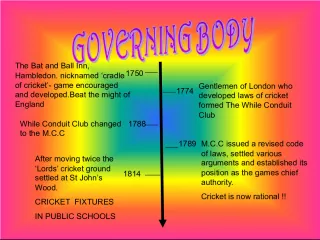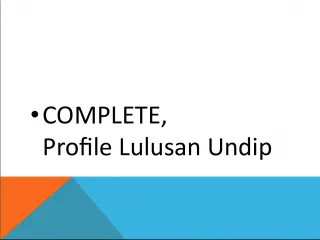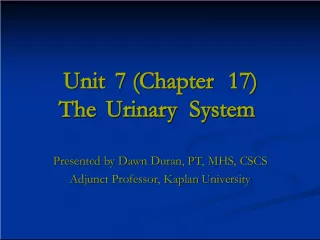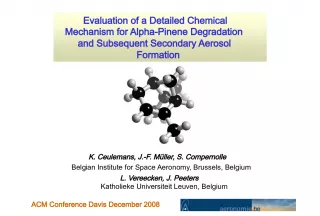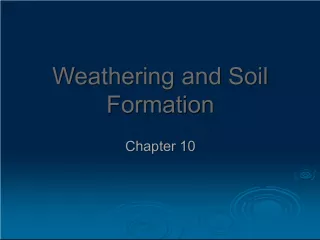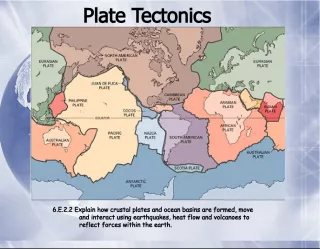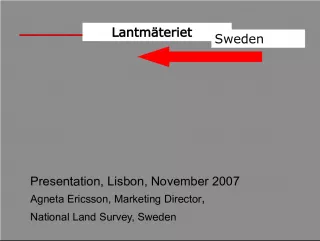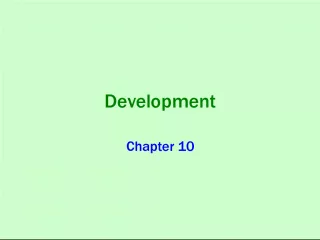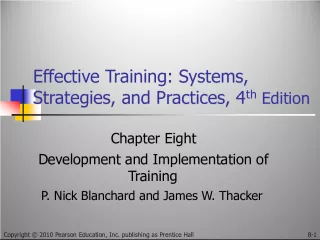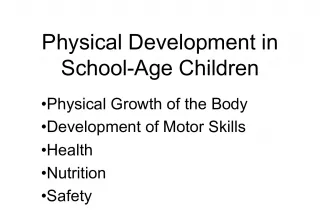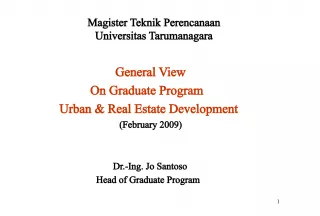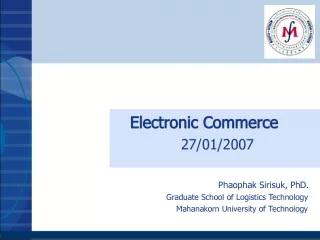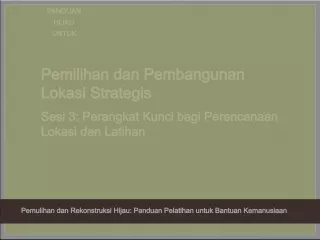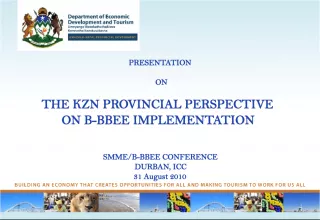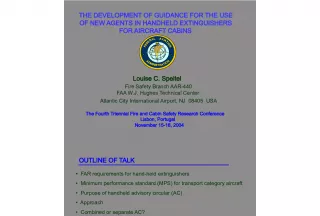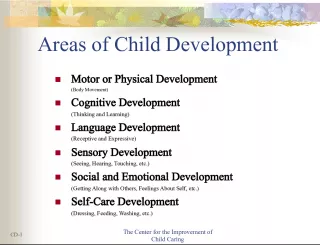Development and Formation of Brachial Plexus in Embryology
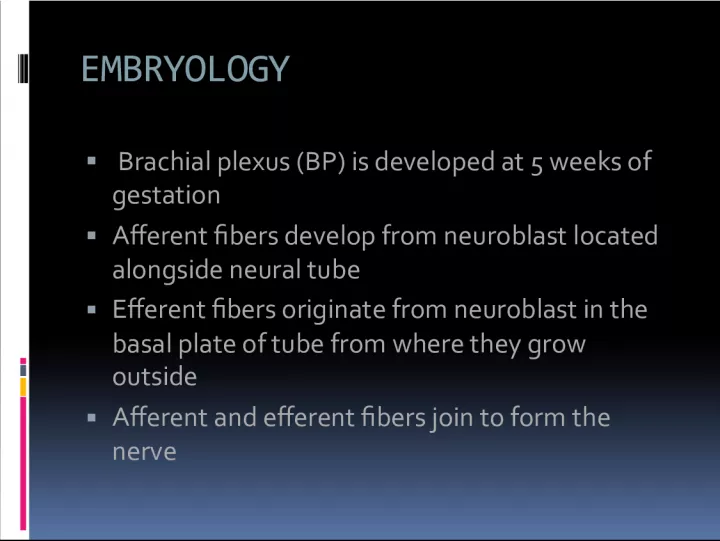

Brachial plexus (BP) is formed at 5 weeks of gestation in human embryos. Afferent and efferent fibers develop from neuroblasts alongside neural tube and basal plate respectively. These fibers combine to form nerves which divide into anterior and posterior divisions with connections in the BP.
- Uploaded on | 3 Views
-
 boganwalker
boganwalker
About Development and Formation of Brachial Plexus in Embryology
PowerPoint presentation about 'Development and Formation of Brachial Plexus in Embryology'. This presentation describes the topic on Brachial plexus (BP) is formed at 5 weeks of gestation in human embryos. Afferent and efferent fibers develop from neuroblasts alongside neural tube and basal plate respectively. These fibers combine to form nerves which divide into anterior and posterior divisions with connections in the BP.. The key topics included in this slideshow are Embryology, Brachial Plexus, gestation, neuroblasts, nerves,. Download this presentation absolutely free.
Presentation Transcript
2. EMBRYOLOGY Brachial plexus (BP) is developed at 5 weeks of gestation Afferent fibers develop from neuroblast located alongside neural tube Efferent fibers originate from neuroblast in the basal plate of tube from where they grow outside Afferent and efferent fibers join to form the nerve
3. Nerves divide into anterior and posterior divisions There are connections between these nerves in the brachial plexus
4. commons.wikimedia.org/wiki/Fil e:Brachial_plexus.jpg
5. Formed by ventral primary rami of lower four cervical and first thoracic nerve root. Frequently have contributions from C4(pre-fixed) or T2(post-fixed).
6. PREFIXED BRACHIAL PLEXUS http://www.msdlatinamerica.com/ebooks/HandSurgery/sid744608.html
7. Post-fixed plexus http://www.msdlatinamerica.com/ebooks/HandSurgery/sid744608.html
8. RELATIONS OF BRACHIAL PLEXUS Fig. 4. The reIationship of the axillary artery to the cords is an important anatomic relationship. The cords surround the axiIIary artery and are named for their position with respect to the axillary artery. L.C. lateral cord MC. Medial cord: PC . posterior Cord.
9. Levels R oots T runks D ivisions C ords B ranches R eal T exans D rink C old B eer
10. C5 and C6 roots form upper trunk C8 and T1 roots the lower trunk C7 forms the middle trunk Joining point of C5-C6 roots is ERBS POINT Each trunk divides into an anterior and a posterior division and passes beneath the clavicle
11. All 3 posterior divisions merge to form the posterior cord Anterior division of the upper and middle trunk merge to form the lateral cord Anterior division of lower trunk forms the medial cord
12. Lateral cord splits into 2 terminal branches: a) Musculocutaneous nerve b) Lateral cord contribution to median nerve (sensory) Posterior cord splits into a)axillary nerve and b)radial nerve Medial cord gives off a) medial cord contribution to the median nerve(motor) and b)ulnar nerve
13. There are few terminal branches of the roots trunks and cords. ROOTS: a)dorsal scapular nerve b)branch to phrenic nerve c)Long thoracic nerve TRUNKS: a)nerve to subclavius b) suprascapular nerve CORDS: a) Lateral cord gives lateral pectoral nerve b)Posterior cord gives upper subscapular, lower subscapular and thoracodorsal nerve.
14. Medial cord gives medial pectoral, medial cut. nerve of arm and forearm.
15. Variations Found in around 50% Most commonly pre-fixed(28-62%) and post-fixed(16-73%)
16. Patho-anatomy Anatomy of rootlets, roots and vertebral foramen contribute to the type of injury Rootlets forming the cervical roots are intraspinal and lack connective tissue or meningeal envelope. This feature makes them vulnerable to traction and susceptibility to avulsion at the level of cord. The spinal nerve is able to move freely in the foramina due to non attachment to it.
17. There is fibrous attachment of spinal nerves to the transverse process seen in the 4 th through 7 th cervical roots This explains the high incidence of root avulsions in C8-T1 roots
18. Preganglionic Tearing of rootlets proximal to dorsal root ganglia a) central b) peripheral Postganglionic Injury distal to DRG
19. Pathogenesis Most patients are men and boys between 15- 25 years 70% of traumatic BPI secondary to motor vehicle accidents Of these 70% involve motorcycles and bicycles Other major injuries usually associated in 70%
20. They are usually closed injuries 95% traction injuries, 5% compression injuries Supraclavicular more common than infraclavicular involvement Roots and trunks most commonly involved Root avulsions: 2 mechanisms peripheral- common central- rare
21. Traction injuries head and neck move away from shoulder, usually involve C5,C6 andC7 C8- T1 involved in hyperabduction injuries Other mechanisms- penetrating injuries iatrogenic injuries
22. MECHANISM OF INJURY Fig. 6. Upper brachiaI plexus injuries occur when the head and neck are vioIently moved away from the ipsilateraI shoulder. The shoulder is forced downward wheras the head is forced to the opposite side. The result is a stretch. avulsion. or rupture of the upper roots (C5. C6. C7). with preservation of the lower roots (C8. T1) www.msdlatinamerica.com/ebooks/HandSurgery/sid744608.html
23. Clinical features High degree of suspicion in injury to shoulder girdle, first rib and axillary artery Median, ulnar and radial nerves can be evaluated by examining finger and wrist motion Elbow flexion and extension can be used to examine musculocutaneous nerve and high radial nerve function Injury to posterior cord may affect deltoid function and muscles innervated by radial nerves
24. Latissimus dorsi innervated by thoracodorsal nerve is palpated posterior axillary fold Medial and lateral pectoral nerves are branches of medial and lateral cord respectively and supply sternal and clavicular head of pectoralis major respectively Supra scapular nerve function shoulder extension, rotation and elevation Look for Horner syndrome, injury to long thoracic nerve and dorsal scapular nerve to differentiate between pre and post ganglionic lesion
25. Assess spinal accessory nerve Active passive range of motion Rule out cord injury Tinels sign Vascular examination Fractures
26. PREOPERATIVE PLANNING Box 1. Preoperative planning priorities for brachial plexus injury surgery 1. Review clinical examinations 2. Scrutinize electrodiagnostic studies 3. Review CT myelography/imaging 4. Assemble operative team, plan for intraoperative electrodiagnostic studies 5. Plan a preoperative conference, including priorities and contingency plans 6. Prepare patients expectations
27. IMAGING Radiography- cervical spine views - shoulder view- AP and axillary -X- Ray chest CT myelography- gold standard for root injury, done at 3 to 4 weeks to see for pseudo meningocoele formation MRI shows whole of brachial plexus, cord injury and neuroma formation
28. ELECTRODIAGNOSTIC STUDIES Can help confirm a diagnosis Localize lesions Define severity of axon loss and completeness of lesion Serve as an important adjunct to thorough history, physical exam and imaging study
29. For closed injuries EMG and NCV can best be performed 3 to 4 weeks after the injury because wallerian degeneration will occur by this time
30. EMG Denervation changes(fibrillation potentials) can be seen in proximal muscles 10 to 14 days and 3to6 weeks post injury in most distal muscles Reduced MUP(motor unit potential) recruitment can be shown immediately after weakness from LMN injury Presence of active motor units with voluntary effort and few fibrillations at rest has good prognosis Can help in distinguishing preganglionic from postganglionic lesions
31. NCS In post traumatic BPI the amplitude of compound muscle action potentials (CMAP) are generally low SNAP important in localizing a lesion as pre or postganglionic
32. INTRA OP TESTING NAP (nerve action potential SEP (somatosensory evoked potential) CMAP (compound muscle action potential)
33. Management Proximal rupture, distal avulsion 60% Complete 5 level injury 50% Five level avulsion 30% Supraclavicular 70-75% Upper trunk 35% C4-T1 avulsion 10% C6-C8avulsion 8% C8/T1 isolated 3% Whole limb injury 45% Intraclavicular 25-33% Single/combined cord injury 30% Isolated peripheral nerve injury 25% Fig. I. Distribution of location and iv of hrachical plesus injuries.
34. Management 15% of supraclavicular injuries have concomitant segmental injuries at or below the clavicle where the peripheral nerve branch from the plexus Musculocutaneous, axillary and suprascapular nerves are particularly vulnerable to traction injury because of soft tissue tethering near their origin
35. Infraclavicular injuries constitute 25- 33% of BPI usually occur at cords or peripheral nerves and usually are incomplete Usually caused by shoulder fracture or dislocation 5- 25% of infraclavicular injuries are associated with axillary artery injury Penetrating injuries are usually infraclavicular
36. Timing of intervention A - acute exploration concomitant vascular injury open injury by sharp laceration crush or contaminated wound B - early exploration (1- 2 weeks) unequivocal complete C5- T1 avulsion injuries C - delayed exploration > 3 months recommended for complete injuries with no recovery by clinical examination or EMG at 12 weeks post injury candidates showing distal recovery without regaining clinical or electrical evidence of proximal muscle function
37. Prioritization Clearly understand the anatomy of injured plexus What is available for nerve transfer Function priority- elbow flexion is the most important to restore followed by abduction, external rotation and scapular stabilization Long thoracic nerve should be performed whenever possible Radial nerve motor function can often be restored with triceps function more likely to return
38. Surgical options Neurolysis Nerve repair Nerve graft Nerve transfer or neurotization Functional free muscle transfer
39. Neurolysis Effective only if scar tissue seen around nerve or inside epineurium, preventing recovery or causing pain Pre and post neurolysis direct nerve stimulation is mandatory to evaluate improvement in nerve conduction
40. Nerve repair Used in sharp transection with excellent fascicular pattern and minimal scar
41. Nerve graft Indicated for well defined nerve ends without segmental injuries Intraoperatively a good fascicular pattern should be seen after the neuroma is excised Possible sources: sural, brachial cutaneous nerve, radial sensory and possibly ulnar nerve Before implantation graft orientation should be reversed to minimize axonal branch loss Surgical technique is considered the most important factor in nerve graft
42. Neurotization A- intraplexal B- extraplexal Plexoplexal options are undamaged roots Other options include medial pectoral nerves and medial cord ulnar nerve Extraplexal options- spinal accessory, intercostal, phrenic and motor branch of deep cervical plexus
43. For upper arm type avulsion, a reliable neurotization strategy has included phrenic-suprascapular nerve transfer and spinal accessory nerve (with an interpositional nerve graft) to musculocutaneous nerve.
44. For complete avulsion injury, a strategy of multiple neurotizations using spinal accessory, phrenic and contralateral C7 nerves provides a patient with a framework to obtain hook grip.
45. OBERLIN TECHNIQUE For upper trunk injury with intact lower trunk- 1 to 2 fascicles of ulnar nerve are anastomosed to biceps Contra lateral C7 is used in pan brachial plexopathy with multiple avulsions and limited donor possibility Contra lateral C7 root can be extended by means of vascularised ulnar nerve graft in patient with C8 T1 avulsion and median nerve is the most frequent recipient Another option is transferring nerve to long head of triceps to anterior branch of axillary nerve
46. Realistic targets to reinnervation Spinal accessory to suprascapular or musculocutaneous Phrenic to axillary nerve Intercostal to musculocutaneous long thoracic, radial and median nerve Long head of triceps nerve to anterior branch of axillary nerve
47. Functioning free muscle transfer Usually gracillis is used- single or double gracillis transfer
48. PROGNOSIS Highly dependent on pattern of injury Complete C4 to T1 injuries are considered most severe and virtually irreparable Avulsion injuries from C5 toT1 amenable to restoration of shoulder and elbow function only Ideal candidate for surgery are patients with proximal rupture or avulsion and sparing of lower trunk
49. AIIMS STUDY Since 1995 to2002 , 505 patients were studied for functional and occupational outcome after surgery for BPI In India BPI is most common due to RTA with Rt side involved in 2/3 40% cases have pan BPI 85% of cable graft yielded improvement in motor power compared 68% in neurotized nerve and 66% in patients undergoing neurolysis
50. Most effective donor nerve for musculocutaneous neurotization was medial pectoral nerve (63.6%) patient improved Accessory nerve was most effective for neurotization of suprascapular nerve (100%) Thoracodorsal axillary neurotization gave (66.7% improvement) 50% patients either remained unemployed or had to change there jobs
51. Thank you Thank you
